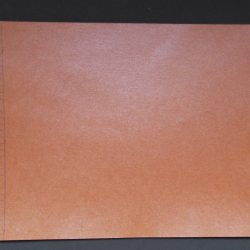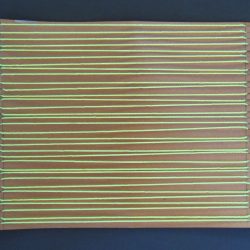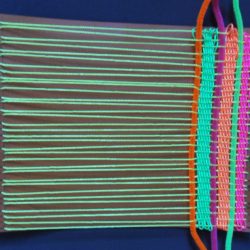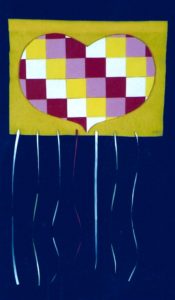The craft WEAVING WITH A SIMPLE FRAME is an updated adaption of the project “A Simple Weaving Frame” found in The Reinhold Book of Arts and Crafts Techniques published by Van Nostrand Reinhold Co., a division of Litton Education Publishing Inc. in 1976. Many important events happened in 1976.
Challenge yourself and always use your imagination!
Materials:
Cardboard
String
Ruler
Pencil/eraser
Scissors
Yarn
Large-eyed tapestry needle (optional)
Ribbon, feathers, wool and other strips of fabric, leaves, twigs, string
* At all times refer to the photo illustrations.
- Weaving consists of a warp and a weft. The warp comprises the vertical strings of the loom while the weft consists of the yarn interlaced through the weft. Take a piece of strong cardboard. Measure and cut ¼” incisions at regular intervals of ¼” to 1/8” on both ends of the cardboard.
- To make the warp: Take heavy string (i.e., kite string) and make a knot at one end. Loop the string from one end of the cardboard to the other and back up again. When finished, cut and make a knot in the back or tape the end of the string to the back of the cardboard. (Always leave a little extra string at either end.)
- To make the weft: Think of a theme or a design for the weaving. The design is up to you! Use a variety of materials to weave in and out as you did with the paper weaving. (The weaving below was woven with pipe cleaners and kite string but almost anything goes!)
- Start with about an inch and a half of warp at the bottom. Make sure strips of material alternate with each row. Roll the material into a ball if possible and pass it through the warp back and forth for several rows depending on the design. Tuck the end in the back of the warp. Do not tie a knot.
- Tips: Consider using a the tapestry needle to weave the yarn and string. A ruler will help you lift the warp so you can pass material through easily but you must lift every other string (see step 4.)
- When the weaving is finished, cut any loose thread in the back of the warp but don’t cut too close to the weft.









